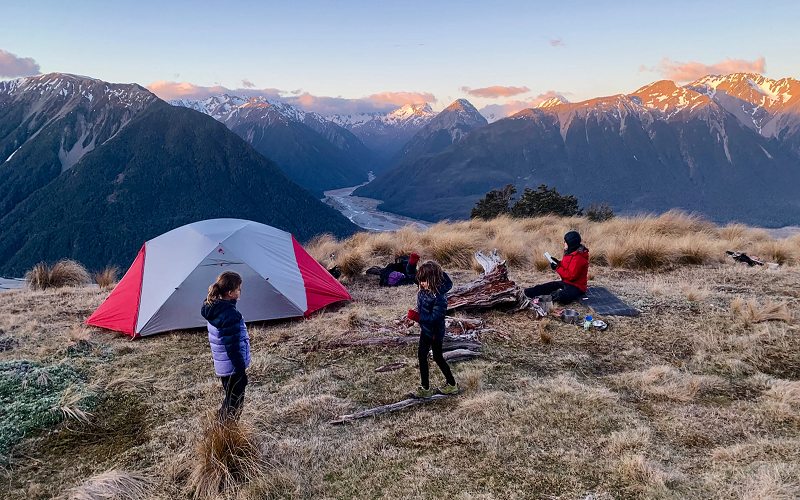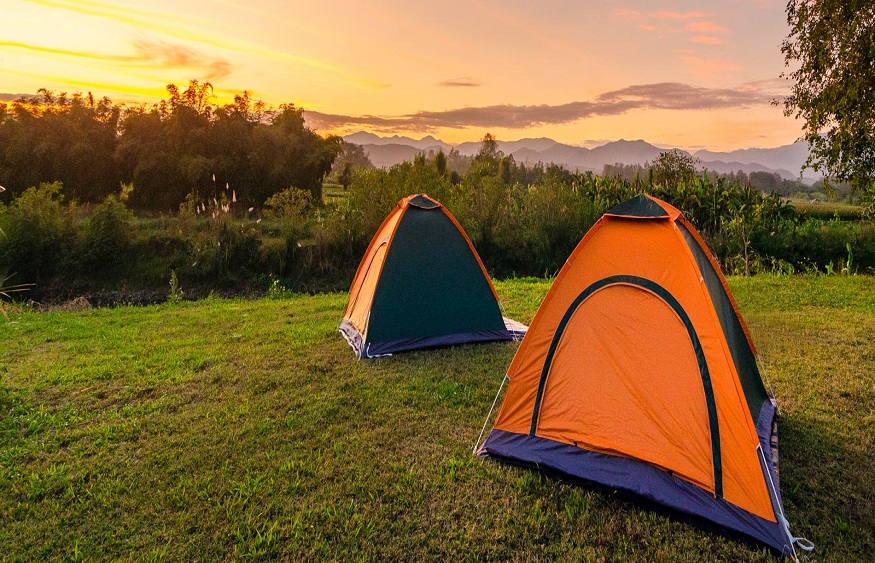Bivouacking in the middle of nature to savor, for one night, the pleasure of the open air and the silence, what happiness! Provided, however, to check the weather, to choose a good spot and… to have the appropriate equipment.
A meadow at the foot of a pass, with no living soul apart from a few ibexes. A lakeside in the mountains, with a view of the valley. A small clearing in a wood, near a river. A landscaped area close to a refuge… Whether in the mountains or across Europe, what a joy to bivouac ! The ephemeral camp folded up at dawn offers, in fact, the pleasure of sleeping outside and waking up in nature. With a difference compared to the campsite: “The bivouac is defined as a temporary installation, chosen or forced, for one night”, specifies Michaël Anthoine, technical adviser to the French Federation of hiking.
Appropriate equipment for a successful bivouac
For it to be a success, you still have to follow a few rules. The first concerns, of course, the equipment which must be adapted to the weather conditions and the season, otherwise the night can turn into a nightmare. It must also be both sturdy and light, because weight is the enemy of the hiker.
In this range, it is possible to find a good two-person/three-season tent, a mattress and a 0°C sleeping bag for less than 3.5 kilos, or even 3. those who bivouac regularly, it’s worth the investment”, assures Michaël Anthoine. However, there are more minimalist choices: single-seater tent, tarp (tarp laid out in the shape of a shelter)… or starry sky! But “these options require a bit of experience,” notes Simon Dubuis, advisor to the bivouac equipment sales site AventureNordique .
On D-Day, it will first be necessary to think about monitoring the weather, especially the night temperature, the 0°C isotherm (altitude at which the temperature becomes negative) and precipitation. Bivouacking in the storm is possible, but can traumatize a beginner!
Then, once on the ground, it is better to set up camp while it is daylight, in the late afternoon or early evening. Finally, the site must be well chosen: flat, without tall grass, without too many stones, in an authorized or at least tolerated place… Some sites are not recommended. “You have to avoid the bottom of the cliffs, because of the risk of landslides, places that are too exposed to the wind and the basins, under penalty of being flooded”, observes Simon Dubuis. The proximity of a water point is a plus, but on condition that you do not get too close to it: the waves could rise in the event of heavy rains, and the fauna which drinks there may be disturbed.
Beware of wild animals
The latter also requires certain precautions. Chamois and ibexes will not disturb your sleep (nor even the wolf in our latitudes), but beware of the cattle and, above all, the dogs that guard it. And then ask about the animals. “In some countries where there are sometimes bears , for example in Romania and Norway , you should not keep your food in the tent, but rather hang it high up on a tree,” warns Simon Dubuis. In any case, do not leave any food lying around overnight.
One last piece of advice: avoid fires when bivouacking. “For a zero impact, it is better to favor the stove, except possibly in the developed areas where fireplaces already exist”, indicates Michaël Anthoine. Too bad for Epinal’s image of the bivouac around the embers! Because one principle takes precedence over all the others: no trace left behind, zero waste.



